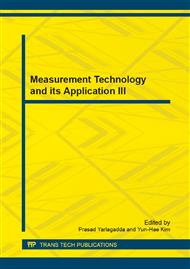p.203
p.208
p.212
p.218
p.223
p.227
p.233
p.238
p.243
Rapid Power Quality Detection Based on Generalized HS-Transform
Abstract:
In this paper, the hyperbolic S-transform (HS-transform) has been generalized with the introduction of the whole time frequency regulation factor and making the HS window function proportional to the square root of the frequency. Meanwhile, combined with the idea of incomplete S-transform, a rapid power quality detection based on generalized HS-transform (GHST) is proposed. Firstly, the fast Fourier transform (FFT) was performed and dynamic measurement was utilized to describe the envelope of power spectrum so as to detect the valid frequency samples of FFT. Then the GHST was specifically performed for these samples and a complex matrix was generated. Finally, these feature vectors extracted from the complex matrix were used to detect the power quality disturbances. Simulation results demonstrate that the proposed method can accurately detect the power quality disturbances with high computation speed and low sensitivity to noise, and it is suitable for practical applications.
Info:
Periodical:
Pages:
223-226
Citation:
Online since:
June 2014
Authors:
Keywords:
Price:
Сopyright:
© 2014 Trans Tech Publications Ltd. All Rights Reserved
Share:
Citation:


